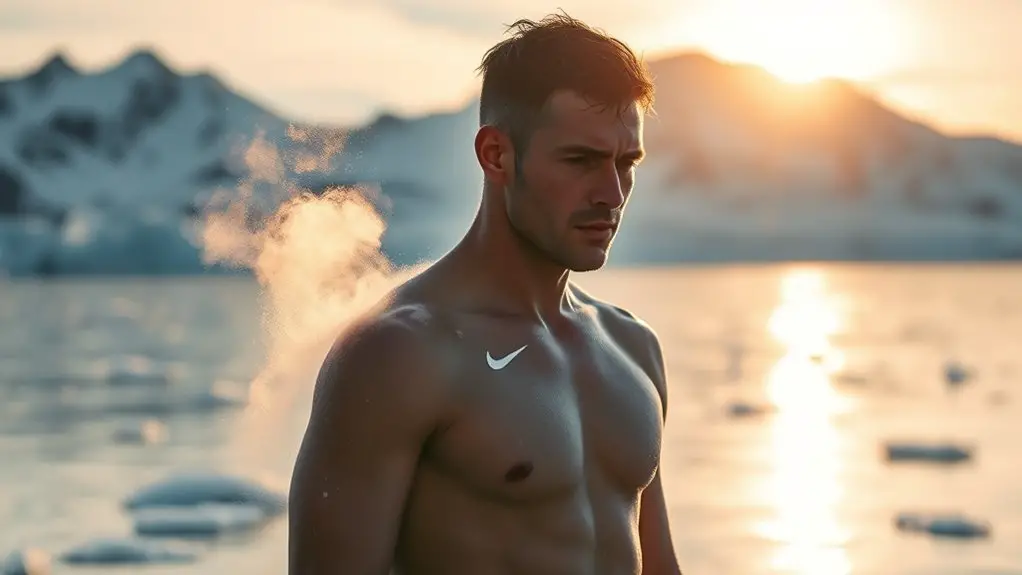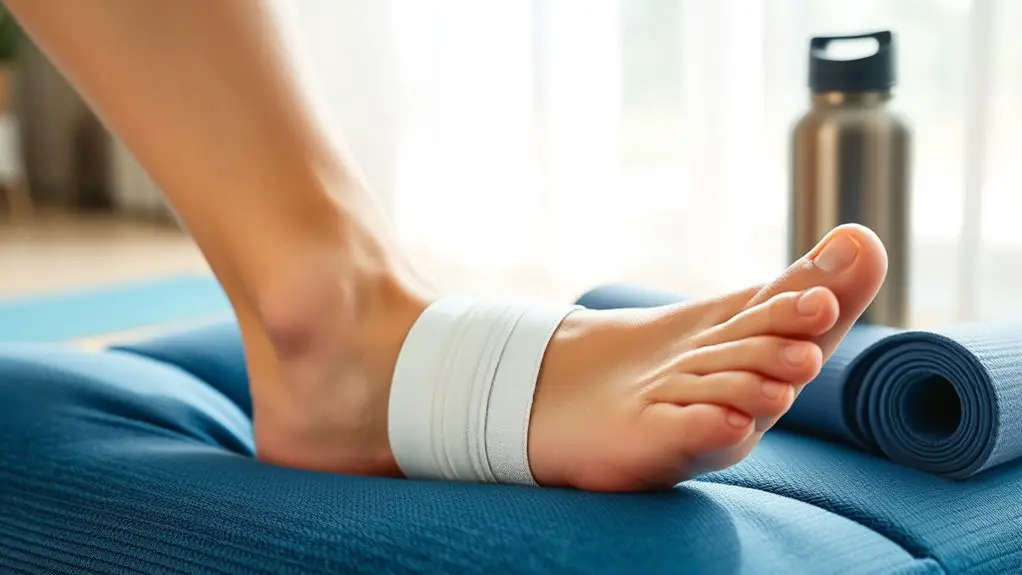Cold exposure training can greatly boost your athletic performance. It enhances recovery by reducing inflammation and soreness, while also sharpening your mental resilience. You'll experience improved circulation, which aids in oxygen delivery to your muscles, and it even helps increase endurance. However, it's crucial to approach cold exposure gradually to avoid potential risks like hypothermia. Want to learn how to safely incorporate cold exposure into your routine for maximum benefits? There's more to explore on this exciting topic!
Understanding Cold Exposure Training
As you explore cold exposure training, you'll find it involves intentionally subjecting your body to low temperatures to enhance physical performance and recovery. This practice might seem intimidating at first, but it offers a unique pathway to freedom in your athletic journey. By embracing the chill, you can awaken your body's resilience, sharpening your mental toughness and boosting your overall endurance.
You don't need to plunge into an ice bath right away; start small. A cold shower or a brisk walk in the crisp air can be effective. Gradually increasing your exposure helps your body adapt, releasing potential you might not even realize you have.
This isn't just about the physical; it's about embracing discomfort and discovering your limits. When you push through the cold, you're not just training your body; you're liberating your mind, giving yourself the freedom to thrive in any environment.
Physiological Responses to Cold Exposure
Cold exposure triggers a range of physiological responses that can greatly impact your performance and recovery. When you're exposed to cold, your body activates mechanisms like vasoconstriction, which helps maintain core temperature by reducing blood flow to the skin. This can lead to a heightened state of alertness, improving your focus during training or competition.
Moreover, cold exposure increases the production of brown adipose tissue, which can enhance energy metabolism and help you utilize fat as fuel more efficiently. Your body also releases catecholamines, boosting adrenaline and preparing you for action.
However, while these responses can be beneficial, they can also push your limits. It's crucial to listen to your body and adapt your training accordingly. Embracing cold exposure with awareness can empower you to harness its effects, revealing potential you might not have realized was within you.
Benefits of Cold Exposure for Athletes
While many athletes seek out various methods to enhance their performance, incorporating cold exposure can offer unique advantages. First off, cold exposure helps reduce inflammation and soreness, allowing you to recover faster after intense training sessions. This means you can get back to what you love sooner, without those nagging aches holding you back.
Additionally, it can boost your mental resilience. Embracing the cold challenges your limits, helping you develop a stronger mindset that can translate into better focus and determination during competitions.
Moreover, cold exposure can improve your circulation, promoting more efficient oxygen delivery to your muscles. This can enhance your endurance and overall performance when it counts the most.
Risks and Considerations
Although many athletes embrace cold exposure for its benefits, it's vital to be aware of the potential risks and considerations involved. First off, exposure to extreme cold can lead to hypothermia, especially if you're not careful with the duration and intensity. You might think you can handle it, but your body has limits.
Additionally, cold exposure can impair your performance if not done strategically. Overdoing it can result in muscle stiffness, impacting agility and strength. It's also worth noting that not everyone's body reacts the same way; some people may experience adverse effects or discomfort that could hinder their training.
Ultimately, while cold exposure can be a game-changer, it's important to listen to your body and take necessary precautions. Always start slow, and consider consulting a professional to tailor your approach. Freedom in training means making informed choices that support your goals without compromising your well-being.
Practical Applications in Training
When you're looking to incorporate cold exposure into your training regimen, it's essential to understand how to apply it effectively. Start by easing into cold exposure with short sessions, like 30 seconds of cold water immersion or a cold shower. Gradually increase the duration as your body adapts. Aim to integrate this practice after intense workouts to enhance recovery and reduce inflammation.
You might also try alternating between hot and cold exposure, known as contrast therapy, to boost circulation and energy. Listen to your body—if you feel overly cold or uncomfortable, don't push it.
Consider timing, too; morning sessions can invigorate you, while evening exposure may improve sleep quality. Above all, keep it enjoyable. Whether it's a revitalizing dip in a cold lake or a brisk walk in chilly air, embrace the freedom these practices bring to your training routine. You'll find your performance improving while enjoying the process.
Future Research Directions in Cold Exposure Training
As researchers continue to explore the benefits of cold exposure training, it is crucial to identify specific areas that warrant further investigation. You've likely felt the invigorating effects of cold exposure, but there's so much more to uncover. Future research could focus on:
- Long-term physiological effects: Understanding how prolonged cold exposure impacts overall health and resilience.
- Individual variability: Examining how different body types and genetics respond to cold training.
- Psychological benefits: Investigating the mental aspects, like stress reduction and improved focus, associated with cold exposure.
- Optimal protocols: Determining the most effective duration and frequency of exposure for various performance goals.
Exploring these directions will not only deepen your understanding but could also reveal new strategies for enhancing athletic performance and personal well-being. Embracing this research may lead you to new heights in your training journey!
Frequently Asked Questions
How Often Should I Incorporate Cold Exposure Into My Training Routine?
You should incorporate cold exposure into your routine a few times a week. Start with shorter sessions and gradually increase duration. Listen to your body; it'll guide you on how often to include it.
Can Cold Exposure Training Help With Recovery From Injuries?
You'd think freezing in ice would make injuries worse, right? Actually, cold exposure can reduce inflammation and speed up recovery. Embrace the chill; it might just set you free from those nagging aches.
Is There an Optimal Duration for Cold Exposure Sessions?
You might find that ideal cold exposure durations vary, but generally, sessions of 10 to 20 minutes can be effective. It's crucial to listen to your body and adjust based on your personal comfort and needs.
Are There Specific Sports That Benefit More From Cold Exposure Training?
Certain sports, like swimming, skiing, and endurance events, can greatly benefit from cold exposure training. You'll find it enhances recovery, boosts resilience, and sharpens performance, helping you achieve newfound freedom in your athletic pursuits.
What Is the Best Time of Day for Cold Exposure Training?
The best time for cold exposure training really depends on your schedule and goals. Many find mornings invigorating, while others prefer evenings for recovery. Listen to your body and choose what feels right for you.




